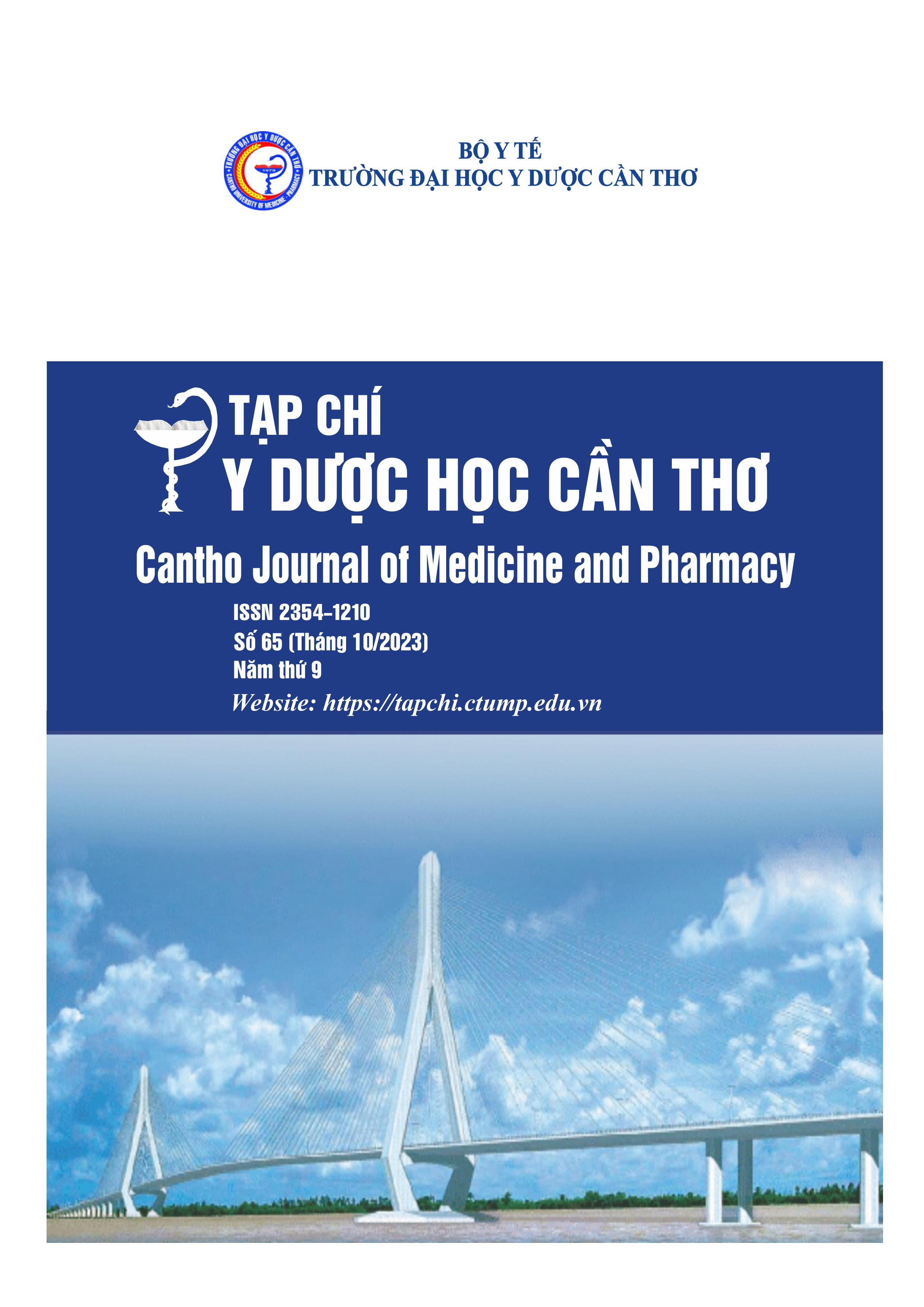CLINICAL CHARACTERISTICS, IMAGES, RISK FACTORS AND EVALUATION OF THE RESULTS OF STENTING TO TREAT SYMPTOMATIC INTRACRANIAL STENOSIS AT S.I.S CAN THO INTERNATIONAL GENERAL HOSPITAL
Main Article Content
Abstract
Background: Symptomatic intracranial arterial stenosis is common in Asians, with a high recurrence rate despite aggressive medical therapy, stenting is considered when stenosis is greater than 70% of failure of medical therapy. Objectives: Clinical features, imaging, risk factors and evaluation of stent placement results for symptomatic intracranial arterial stenosis. Materials and methods: A cross-sectional descriptive study was conducted on 45 patients with symptomatic with intracranial arterial stenosis came for examination and treatment at S.I.S Can Tho International General Hospital, failed medical treatment, had intracranial arterial stenosis over 70%. Results: mRS 0-2 was 80%, mortality was 2.2%, recurrent cerebral infarction was 2.2%, procedural event was 4.4%. Conclusion: Intracranial stenting is a safe, effective method with low complication rates.
Article Details
Keywords
Ischemic stroke, intracranial atherosclerosis desease, intracranial arterial stenting
References
2. Chugh C. Acute Ischemic Stroke: Management Approach. Indian J Crit Care Med. 2019. 23(2), 140-146, https://doi.org/ 10.5005/jp-journals-10071-23192.
3. Mai Duy Ton, Dao Xuan Co, Luong Ngoc Khue, Nguyen Trong Khoa, Nguyen Huy Thang. Current State of Stroke Care in Vietnam. Stroke: Vascular and Interventional Neurology. 2022. 2(2), e000331, https://doi.org/10.1161/SVIN.121.000331.
4. Holmstedt C. A, Turan T. N, Chimowitz M. I. Atherosclerotic intracranial arterial stenosis: risk factors, diagnosis, and treatment. Lancet Neurol. 2013. 12(11), 1106-1114, https://doi.org/ 10.1016/S1474-4422(13)70195-9.
5. Kasner S, Lynn M, Chimowitz M, Frankel M, Howlett-Smith H, et al. Warfarin vs aspirin for symptomatic intracranial stenosis: subgroup analyses from WASID. Neurology. 2006. 67(7), 1275-1278, https://doi.org /10.1212/01.wnl.0000238506.76873.2f.
6. Chimowitz M. I, Lynn M. J, Howlett-Smith, Stern B. J, Hertzberg V. S, et al. Comparison of Warfarin and Aspirin for Symptomatic Intracranial Arterial Stenosis. New England Journal of Medicine. 2005. 352(13), 1305-1316, https://doi.org/10.1056/NEJMoa0430 33.
7. Psychogios M, Brehm A, López-Cancio E, Marco De Marchis G. European Stroke Organisation guidelines on treatment of patients with intracranial atherosclerotic disease. Eur Stroke J. 2022. 7(3), Iii-iv, https://doi.org/10.1177/23969873221099715.
8. Alexander M. J, Zauner A, Chaloupka J. C, Baxter B, Callison R. C, et al. WEAVE Trial. Stroke. 2019. 50(4), 889-894, https://doi.org/ 10.1161/STROKEAHA.118.023996.
9. Lê Hoàng Khỏe, Vũ Đăng Lưu. Đánh giá kết quả đặt Stent điều trị hẹp động mạch nội sọ. Luận văn thạc sĩ y học, Trường Đại học Y Dược Hà Nội. 2020. 50-100.
10. Cao Phi Phong, Phạm Đăng Lộc. Tần suất và tiên lượng hẹp động mạch nội sọ ở bệnh nhân thiếu máu não cấp. Tạp chí Y học thành phố Hồ Chí Minh. 2012. 16(1), 299-305.
11. Đỗ Đức Thuần, Đặng Phúc Đức. Nghiên cứu kết quả đặt stent động mạch nội sọ ở bệnh nhân nhồi máu não và cơn thiếu máu não thoáng qua. Tạp chí Y học Việt Nam. 2022. 511(1), 107111, https://doi.org/10.51298/vmj.v511i1.2057.
12. Phạm Nguyễn Thành Thái, Cao Phi Phong. Tỉ lệ tái phát của bệnh nhân hẹp động mạch nội sọ có triệu chứng với điều trị nội khoa tích cực trong vòng 3 tháng. Trường Đại học Y Dược Thành Phố Hồ Chí Minh. 2018. 57.


